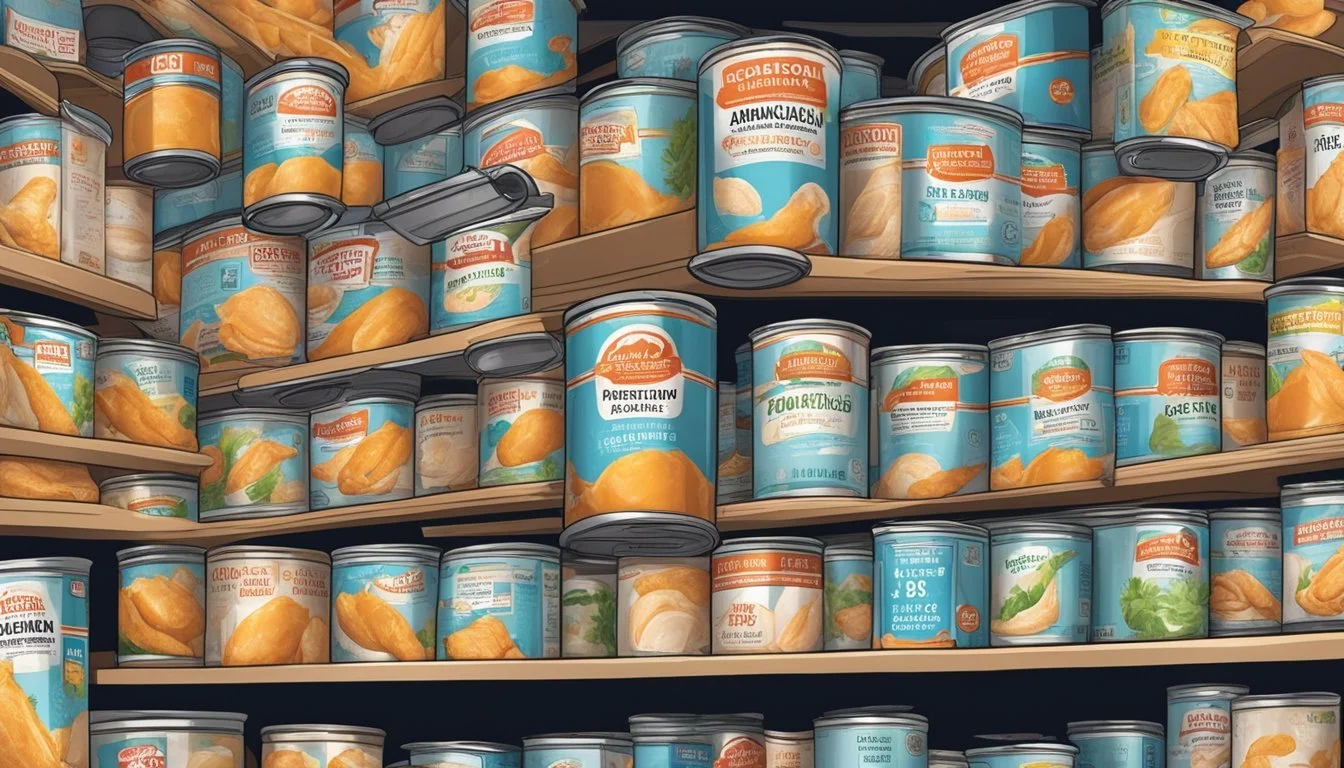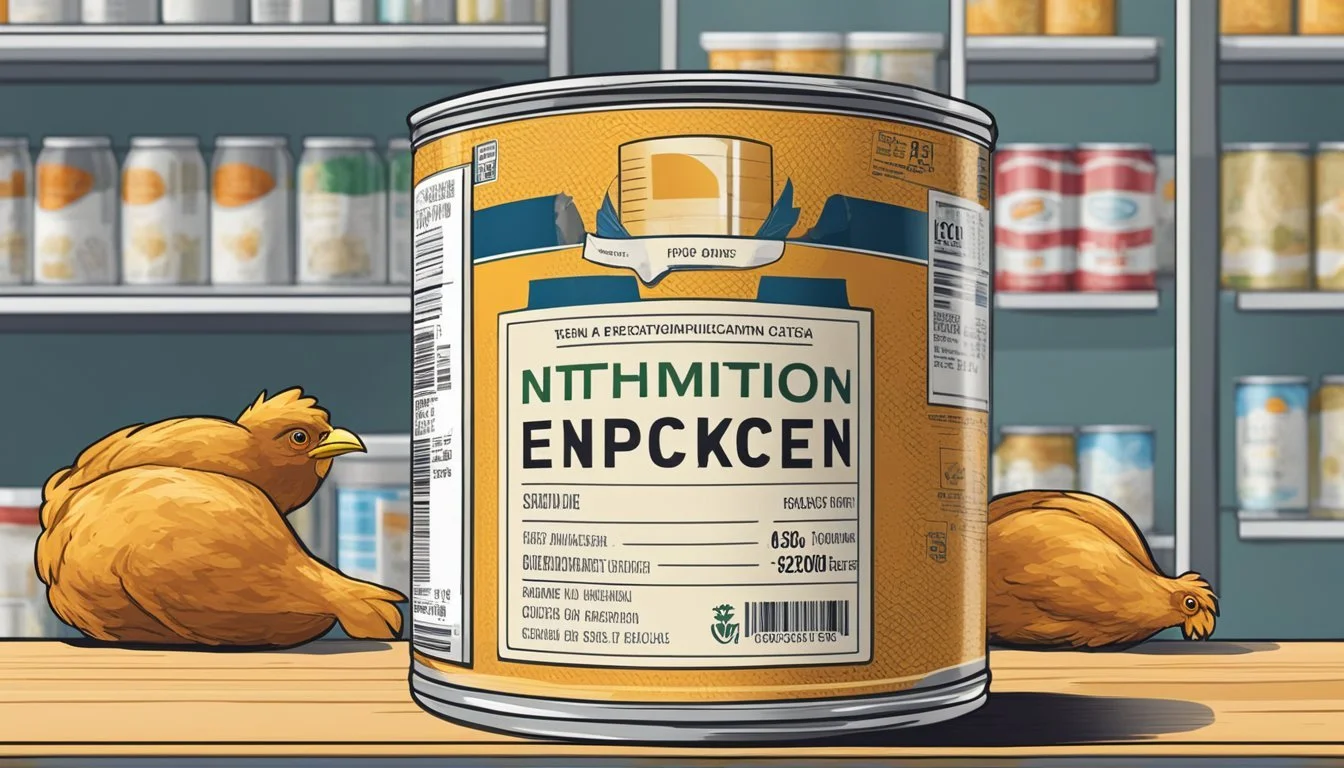How Long Does Canned Chicken Last?
Understanding Shelf Life and Storage Tips
Canned chicken (how long does chicken last?), a staple in many pantries, offers a convenient and long-lasting option for adding protein to meals. The shelf life of unopened canned chicken typically extends up to three years under proper storage conditions. This longevity is due to the canning process, which seals the chicken in an airtight environment, slowing down the deterioration process considerably.
Food safety is paramount when it comes to consuming any canned goods, including chicken. Once opened, canned chicken should be treated like any other perishable food. It's advised to refrigerate the leftovers promptly in a covered glass or plastic container and consume them within two to four days. To ensure the quality and safety of the canned chicken, it should be stored in a cool, dry place away from any extreme temperatures, which can affect the integrity of the can and the quality of its contents.
What Is Canned Chicken?
Canned chicken is a versatile and convenient protein source that retains its nutritional value and comes in various forms suitable for different culinary applications.
Definition and Types
Canned chicken refers to chicken meat that has been cooked, seasoned, and then sealed in a can. This process preserves the chicken, allowing it to have a long shelf life. There are different types of canned chicken meat available, including but not limited to:
Breasts: White meat (What wine goes well with white meat?) that is often considered leaner and is frequently used in sandwiches and salads.
Thighs: Darker meat that is richer in flavor and commonly used in more robust or hearty dishes.
Canned chicken may come in whole pieces, chunked, or shredded, catering to a variety of uses, from quick snacks to substantive meal components.
Nutritional Value
Canned chicken maintains a significant nutritional value, supplying essential proteins and vitamins. Here's a straightforward analysis of its nutritional components:
Protein: It is a good source of lean protein, which is crucial for muscle building and repair.
Vitamins: The chicken in cans typically contains vitamins such as B6 and B12, important for energy metabolism and red blood cell formation.
Being a canned food, it may also contain added sodium used in the preserving process, which consumers should be aware of, especially those monitoring their salt intake. Canned chicken provides a convenient option for those seeking a quick protein addition to their meals.
Shelf Life and Expiration
When discussing the shelf life and expiration of canned chicken, it is crucial to differentiate between the periods before and after opening the can. Proper storage conditions play a vital role in maximizing these time frames.
Unopened Cans
An unopened can of chicken has a significant shelf life, maintaining its quality for up to one year for optimal freshness, although it can remain safe for consumption for approximately two to three years if stored correctly in a pantry. One should ensure the storage environment is cool and dry, with temperatures maintained at or below 75 degrees Fahrenheit. Key indicators printed on the can, such as the "best before" or "expiry date," are manufacturers' estimates of when the product will remain at peak quality.
Storage Location Temperature Quality Maintenance Pantry Below 75°F 1 year (optimal) 2-3 years (safe)
After Opening
Once the can is opened, any unused chicken should be transferred to a refrigerated container. The shelf life of canned chicken after being opened is markedly shorter; it should be consumed within 1-3 days for assured safety and quality. If there’s a need for longer preservation, one may store the opened canned chicken in the freezer, extending the safety window up to two to six months.
Storage Location Temperature Quality Maintenance Refrigerator 35-40°F 1-3 days Freezer 0°F or below 2-6 months
Storage beyond these time frames is not recommended as quality degradation and safety concerns increase significantly.
Storage Guidelines
Proper storage is crucial to maximize the shelf life of canned chicken and ensure its safety for consumption. Adhering to recommended guidelines can prevent spoilage and potential foodborne illnesses.
Ideal Storage Conditions
For unopened canned chicken, storing it in a cool, dry place such as a pantry or cupboard away from direct sunlight is essential. The temperature should be maintained below 85°F (29°C) to safeguard the product's quality. Storing cans above this temperature may lead to decreased shelf life and compromised safety. An expiry date is usually printed on the can, and consumers are advised to use the product before this date to ensure the best quality.
Refrigeration and Freezing Methods
Once a can of chicken is opened, the remaining product should be transferred to an airtight container and placed in the fridge. The refrigerated leftover should be used within three to four days to maintain safety and quality. If the consumer wishes to store the chicken for a longer period, it can be frozen. When freezing, one should ensure that the chicken is enclosed in a freezer-safe airtight container or heavy-duty freezer bag. Canned chicken can be stored in the freezer for up to two months for optimal quality. When ready to eat, it should be thawed in the refrigerator and not at room temperature to minimize the risk of bacterial growth.
Safety and Spoilage Indicators
When assessing the safety of canned chicken, one must carefully check for spoilage indicators to avoid consuming a potentially unsafe product.
Visual Inspection
During visual inspection, one should look for any signs of bulging or deformity in the can, which may indicate gas production from bacteria and a compromised seal. It is crucial to inspect the chicken for any discoloration or mold growth, which are clear indicators that the canned chicken should not be consumed.
Smell and Taste Tests
Before tasting, one should first conduct a smell test. If the canned chicken emits an off odor that is not characteristic of fresh canned chicken, it should be discarded. The product should never have a slimy texture or an abnormal taste, as these traits suggest spoilage. For safety, one should avoid tasting if the smell is questionable, as even a small amount of spoiled food can cause illness.
Food Preservation Methods
Preserving the freshness and extending the shelf life of food, particularly canned chicken, demands precise methods and careful attention to detail.
Canning Process
The canning process is paramount to preserve chicken effectively. One begins by filling the canning jars with chicken, ensuring 1 inch of headspace is maintained from the rim. Subsequently, one may add salt, broth, or water to assist in preserving flavor and texture. It's imperative to expel as much air as possible by pressing down on the meat. A pressure canner is then utilized to seal the jars ensuring the elimination of bacteria through high temperatures. Canning lids and rings should be checked for proper sealing after the canning process.
Extending Shelf Life
To maximize the shelf-life of canned chicken, proper storage conditions are critical. One should store the jars in a cool, dark place, away from heat sources and direct sunlight. The addition of preserving agents like salt, oil, or garlic powder (how long does garlic powder last?) can contribute to longevity. Chicken canned according to recommended guidelines may remain consumable for up to 12 to 24 months. One must regularly inspect canned chicken for signs of spoilage, which includes bulging lids, leaks, or off odors before usage.
Potential Health Risks
When consuming canned chicken, one must be cognizant of potential health risks such as foodborne illnesses and contamination. Proper storage and handling can help mitigate these risks.
Foodborne Illnesses
Foodborne illnesses can occur if canned chicken is not processed or stored correctly. Bacteria such as Salmonella or Listeria can survive in improperly canned foods. Symptoms of food poisoning from bacteria contaminated chicken include nausea, vomiting, and diarrhea. It is essential for consumers to ensure canned chicken is cooked to a minimum of 165 degrees Fahrenheit to kill any harmful pathogens present.
Contamination and Preventive Measures
Contamination of canned chicken can happen at various stages including production, storage, or serving. Common signs of contamination in canned foods are:
Rust on the can which can compromise the integrity of the seal
Leaking cans which suggest seal failure and potential bacterial entry
Swollen or bulging cans indicating gas production from bacteria
Preventive measures include:
Inspecting cans before purchase for visible signs of damage
Storing canned chicken in a cool, dry place
Discarding any cans with damage, rust, or signs of spoilage
By adhering to these measures, consumers can significantly reduce the risk of contamination and foodborne illnesses.
Usage and Serving Suggestions
When incorporating canned chicken into meals, one should consider both how it's used in recipes and the best practices for storing it after preparation. Canned chicken is fully cooked and ready to eat, lending itself well to various dishes while requiring attention to storage guidelines to maintain its flavor and safety.
In Recipes
Canned chicken offers a convenient protein addition to meals, as it's pre-cooked and merely requires warming up or adding into other ingredients. For instance, it's ideal for:
Salads: Shred the chicken and mix it with greens, vegetables, and dressing.
Pasta dishes: Combine with sauces and noodles for quick, hearty meals.
Soups and stews: Fold into broth-based recipes for an enhanced flavor and satiety.
In every recipe, consider balancing the flavors, as the canned chicken can have a milder taste compared to freshly cooked poultry.
Storage After Cooking
After canned chicken is used in a recipe or if one has leftovers, proper storage is crucial:
Refrigeration: Store in a sealed storage container and refrigerate promptly.
Shelf-life: Leftover dishes with canned chicken should generally be consumed within 3-4 days for safety and quality.
Here are the guidelines for storing leftover dishes containing canned chicken:
Condition Storage Method Duration Leftovers (cold recipes) Refrigerator in an airtight container 1-2 days Leftovers (hot dishes) Refrigerator in an airtight container 3-4 days Mixed into other ingredients Refrigerator in an airtight container According to the other ingredient with the shortest shelf-life
Always check for any off-odors or discoloration before consuming leftovers, as these are signs of spoilage.
Regulations and Standards
In the context of canned chicken, both labeling and expiration dates, along with USDA standards, play crucial roles in ensuring that consumers are informed about the food quality and shelf life of the products they purchase.
Labeling and Expiration Dates
Labeling regulations require that canned chicken have clear expiration or "use by" dates to inform consumers of the period during which the product is expected to remain at peak quality. These date labels are typically determined by the manufacturer based on various factors, including the nature of the product and its preparation process. The United States Department of Agriculture (USDA) does not require an expiration date for canned foods but does monitor and regulate the labeling to ensure accuracy for consumers. For canned chicken, it's generally recommended that it be used within one year for optimal food quality even though an unopened can may last up to three years.
USDA Standards
The USDA sets rigorous standards to ensure the safety and quality of poultry products, including canned chicken. These standards take into account crucial factors such as:
Acidity Levels: Canned foods with low acidity, such as chicken, are required to undergo specific processing methods to prevent bacterial growth and ensure a longer shelf life.
Storage Conditions: Commercially canned foods should be stored in a cool, dry place to maintain product integrity and prevent spoilage due to extreme temperatures.
Canned Chicken Shelf Life: According to USDA guidelines:
Storage Location Recommended Shelf Life Pantry (unopened) Up to 3 Years Pantry (opened) 3 to 4 Days (refrigerated)
These regulations encompass all aspects of food processing and handling, from manufacturing to the end consumer's pantry, ensuring that the shelf life indicated is a reliable measure of the canned chicken's longevity and safety.




